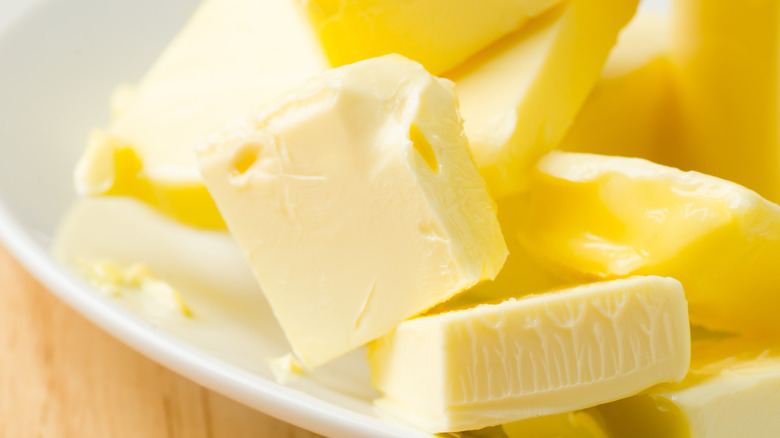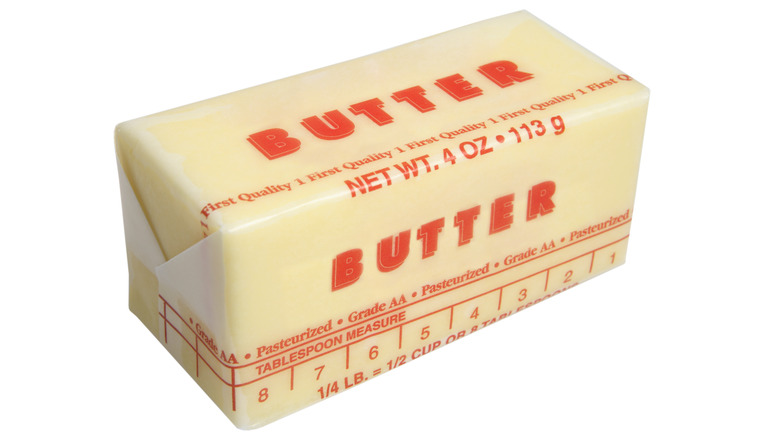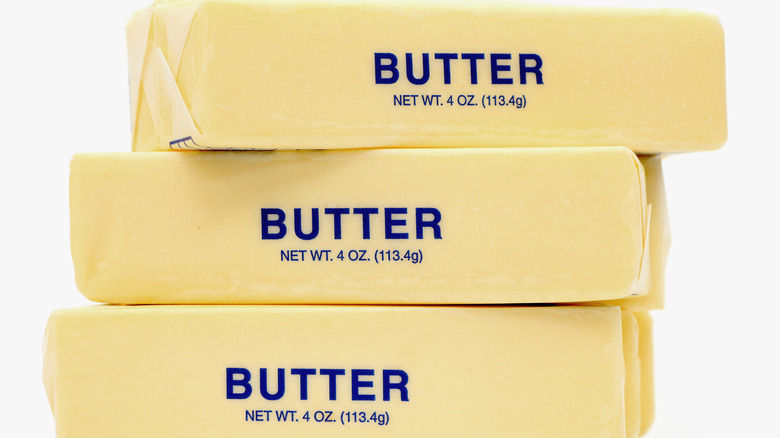Yes, There Is A Difference Between East And West Coast Butter
Depending on where you live, certain products can be the same but go by different names. A glass of cola on the East Coast is called soda, for example, while in the Midwest they probably call it pop, and in the South they call it a "Coke" — no matter what flavor it is. There are lots of other foods with different names, which can make ordering in a restaurant a little confusing when you're not at home.
For example, in New England, you might treat yourself to a smattering of "jimmies" on your ice cream cone, which most of the rest of the country calls sprinkles. And be careful what you call a long sandwich if you don't want to get the side eye from the locals — it's a grinder in New England, a hero in New York, a hoagie in Pennsylvania, and a sub in the midwest.
There are also a few common products that are the same but come in different packaging depending on where you live, such as Best Foods mayonnaise as it's known on the West Coast, which East Coasters know better as Hellmann's. It might surprise you to know that even regular old butter is a little different depending on which coast you call home.
It's all about the stick shapes
You probably don't think a lot about a standard stick of butter, aside from the brand name and whether it's salted or unsalted. But there are some big differences between the East Coast and West Coast when it comes to this kitchen staple.
When you're shopping for butter to make puff pastry or shortbread cookies in, say, New York, you're probably accustomed to seeing one-pound four-packs of long, skinny sticks. These are known as Elgin-style sticks, which are named for the type of butter molds that make them. The molds — known as Elgin Butter Cutters — were created in the early 1900s by the Elgin Butter Co. in Elgin, Illinois and were the industry standard for decades.
It wasn't until the West Coast started increasing dairy production in the 1960s that a new shape of butter stick was created. East Coast dairies dominated the industry up until then, so all of their butter was manufactured with Elgin Butter Cutters. When the West Coast needed butter-making equipment, however, the Elgin-style machines were no longer available. So West Coast butter makers had to create new machinery, and they designed them to make the shorter, fatter style of sticks known as the "Western stubby."
Despite the differences, it's the same stuff
Despite the differences in shape, Elgin-style and Western stubby sticks are the same product, and you can use them interchangeably. So if you're a New Yorker shopping for ingredients for a pie crust while you're visiting Los Angeles, don't freak out when you see flat packages of butter cubes. What's inside the sticks is identical, and the volume is the same too, even if the sticks look smaller to your untrained eye. Both styles of butter are made with plain butter fat, and all of the sticks weigh a quarter of a pound and contain eight tablespoons.
These days, butter could probably be made into one standard shape and sold throughout the country, and butter titans Land O' Lakes actually makes both styles of sticks to appeal to different parts of the country. But consumers are pretty loyal to their regional butter shapes.
There are a lot of factors to keep in mind when you're choosing a butter for your home cooking projects, including fat content, color, country of origin, if it's cultured, organic, or spreadable. But when it comes to plain sticks of butter for scraping on toast or slathering on corn on the cob, the only difference the shape of the stick makes is the part of the country where you bought it.


